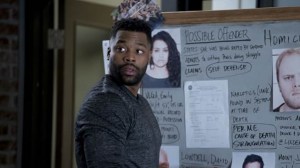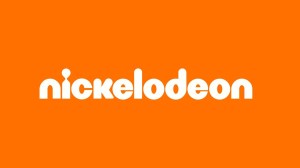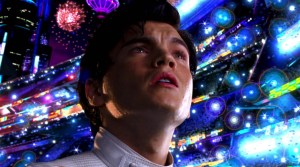Back in 1974, director Steven Spielberg was attempting to pull off the seemingly impossible task of adapting Peter Benchley’s novel Jaws into a feature film. Of the many ambitious elements of the project, one of the biggest was Spielberg’s decision to actually shoot the film on the ocean instead of the controlled setting of Universal Pictures’ backlot, resulting in the film’s shoot lasting nearly three times longer than scheduled and going massively over its budget. Despite the number of setbacks the production faced, all of those gambles paid off as the film helped solidify the concept of a “blockbuster” when it debuted in 1975 and regularly drew lines around movie theater blocks.
Videos by ComicBook.com
A key component in bringing the project to life was production designer Joe Alves, who not only helped craft the famous robotic sharks that were utilized for the film, but additionally collaborated with Spielberg ahead of the film’s shoot on a number of storyboards. Alves also went on to work on Jaws 2 and served as the director of Jaws 3-D.
In honor of Jaws landing on 4K Ultra HD Blu-ray for its 45th anniversary, which includes over 3 hours of bonus features and a 44-page booklet with rare photos, storyboards, and more from the archives, ComicBook.com caught up with Alves to discuss the development and legacy of the project.
Header photo courtesy of Alberto E. Rodriguez/Getty Images/Universal Pictures
Project Origins

ComicBook.com: Having grown up in Massachusetts and regularly visiting the shores of Cape Cod, Jaws has always been a staple of my upbringing and seeing those New England beaches in the film always makes me homesick.
Joe Alves: Wonderful. I scouted all that area, all along New England and all the way down, Massachusetts to Woods Hole and up north, trying to find the right place to shoot it. Martha’s Vineyard seemed to be … I got to tell you, because I met with Peter Benchley in New York and asked him, “Where did you write this for?” And he was specific. He said, “Sand Harbor, Covington,” whatever. And then he said, “I’ll go to Nantucket. My parents were there and blah, blah, blah.” And so I was traveling to Nantucket. I said, “What about Martha’s Vineyard?” He had never been there. So I took a boat to Nantucket and the weather was so bad, they turned around, went back to Woods Hole. So I’m sitting there and I say, “Oh, there’s a boat to Martha’s Vineyard.” I better go see what that looks like. And so that’s how that happened.
Well speaking to that initial approach to the project, thinking back on those early days of the endeavor, do you remember what your initial reaction was in regards to how much work would be required of you? If you knew just how difficult the project was going to be?
Well, let me just first say, I started on it very early before Steven was assigned it, based on the galley sheets David Brown sent me, because he thought it might make a good movie. But they didn’t have a deal with Universal. So I did a bunch of story illustrations and stuff. But basically when Steven and I decided, he was put on the movie, and we decided we wanted a 25-foot shark and we wanted to do it in the ocean, not in a pond with a backdrop. And so when I talked to various effects people at Universal, at Disney, they all said it would take a year, year and a half to make it. It’s never been done.
So there lies the problem, is that we thought we had a year and a half to build the shark and to test it and make sure everything was working before we started shooting the movie. And that was probably, let’s see, ’73, November of ’73. The book came out in February ’74, and the studio said, “We got to start shooting this in two months.” So there lies the problem, is the effects guys didn’t have a year and a half. They had four, five months. And then, of course, then working in the ocean is unbelievable. You never know what’s going to happen with the ocean.
Experimentation
In that sense, it sounds as though part of the reason for the shoot being so long is due to how much you were forced to develop the shark and the effects as things were already shooting, instead of having the time to figure things out before the cameras started rolling.
Yeah. Basically they thought, “Oh, we’ve got to make money off of this book, which is a big bestseller.” And they want us to start in April and Steven got them to push to May and well, you know the East coast. Can you imagine swimming in the ocean in May?
So all those people, those extras, were in the ocean and that was in May, when we had to shoot everything we could without the shark because the guys were building it and testing it. Steven went through and shot everything we could before. Then I’d go to Bob Mattey, because we had three different sharks; one on a big platform on a crane, two of them we towed. And so I’d go see Bob. I said, “What’s working?” He says, “I think the left-to-right shark.” So I go to Steven and would say, “If it works, shoot it. If it’s doesn’t, it’s a test.” And we did storyboards. I did a couple of hundred storyboards with that. We sort of followed that pattern.
Even though, obviously, the shark wasn’t entirely working as planned was part of what makes the film, what we do see of it on screen and what we don’t see of it makes it so special.
Highlights

When you look back at the film, are there specific contributions you made to either the shark itself or the production as a whole that you’re most proud of?
Well, as I say, I storyboarded, and I know I have a book out called “Joe Alves: Designing Jaws.” It’s on Amazon. That comes out this year. So when people say we didn’t use the shark because it didn’t work, every shark shot that is storyboarded, we got. It was Steven’s idea to make this more of a Hitchcock kind of thing. We use the barrels to present the shark. Not because it wasn’t working, because the barrel pops up, then you know there’s a shark down there.
I’ve had critics say we didn’t use the shark because it didn’t work. Not the case at all. We eventually got all the shots, it took us a while. We were over schedule, over budget, but it was Steven’s concept to make it more mysterious, not to have “shark, shark, shark.” When it comes up and [Roy] Scheider says, “You got to get a bigger boat,” and then when it comes into the cabin was one of my more pleasant achievements in, “Oh, my God, it’s going to work.” It was perfect. So that felt really good with some of those, that shot, in particular.
Return to Jaws
Given how much you learned not only working on the first three Jaws films but the rest of the projects you’ve worked on in your career, if a new Jaws was being made and they enlisted you to help, do you think you could tell them exactly how to make a shark that worked perfectly?
Patrick, after three Jaws movies, I think I was exhausted. I directed 85 second unit shots with a lot of shark underwater in the second Jaws. And I directed the third one in 3-D, which is very, very different. So after Jaws 3-D, forget about sharks. I had enough of sharks. I don’t think I could be coached into doing, another shark.
So if a “Jaws: Reborn” ever happens, you’re going to let that call go to voicemail?
As I did with number four. They were all very, very difficult. The first one, of course, was very difficult. The second one, I was a producer, production designer, and second unit director. And I took that to Florida because we had so many problems. When I scouted Martha’s Vineyard, it was in the winter, and a beautiful bay, had nobody there, and then comes the summer. All the boats from Hyannis are coming. And Steven, rightly so, wants to see no boats. He wanted these guys isolated. So, that was a hassle.
On the second one, I found a place in Navarre Beach in Florida and they had no boats. But that became difficult because then the studio got really involved. They didn’t have anything to do with the first one as far as the shark was concerned. I built the whole thing. The second one, they thought, “Oh, this is going to make them a lot of money. We’ve got to have a lot more shark shots,” which we did and then we cut them out. But then the third one, of course, was very difficult because of the 3-D and the producer was a television guy, wanted everything quick and cheap. So none of them were easy.
And having that 3-D component surely added more complications to the matter.
Well, we had to make cameras. We didn’t have any cameras. We had some made just in time to start shooting. Arriflex made some 3-D and underwater 3-D and stuff. It was really difficult getting the convergence right with the glasses and stuff.
CGI Reboot

Richard Dreyfuss has previously said he’d be interested in seeing a new take on the concept with the film’s effects updated with CGI. Would you be interested in ever seeing something like that happen?
Well, there’s so many shark things and everything’s made in CGI. They’re perfectly clean-looking sharks and you could do everything in CGI. So it’s a whole different thing. And what happened with CGI and some of these new shark movies is they just overuse it. “Why have one shark? We could have a hundred sharks because we just keep duplicating the CGI.” So let me say this: I saw Jaws two years ago because we had, in Catalina, there was a museum there and they had a six-month display of all the Jaws illustrations, Greg Nicotero made the three characters full-size and all this stuff. And they had a screening at night on a big screen. I hadn’t seen it on a big screen for a long time. And what I realized, Patrick, is what was really the thing about that movie was the three characters.
It was three guys out on a boat, totally different people. Old crusty fisherman, the shark biologist, smart-ass kid, and the cop that didn’t want to be on the boat at all. And so I realized the movie’s not really just about a shark. It’s about those people and their relationship. And then the shark appears. But you take away that and … this is what the brilliant stuff was, was Spielberg’s direction. So I think that was the movie. Duplicating that today, it’s like making Gone With the Wind again.
I totally agree. The shark has never been what was interesting, it’s how Quint, Hooper, and Brody react to this otherworldly threat attacking the town.
And then you have Murray Hamilton [as the mayor]. “We’ve got to go into the water, but you can’t, you’ve got to close the beaches.” Like what we have today. “You got to go out and buy some stuff. No, no, but we’ve got to. No, no, it’s okay. Well, it wasn’t okay to go out in the water because a little kid got eaten.” It was a real thing. It’s sad. The mayor cares about the business of the island in the summer. Business is the most important thing, but people could get eaten.
We’re definitely seeing a lot of characters like the mayor on TV today.
Isn’t that interesting?
Other Projects
Lastly, after your work on Jaws, you collaborated with John Carpenter on both Escape from New York and on Starman. Is there anything you can tell us about your time on those projects?
Oh yeah, It was great. That was interesting. It’s a long story with John, but we got a good relationship with [producing partner] Debra [Hill], she passed away. She was great. That’s a whole, whole other story, but we would probably do another talk.
But I’d just like to mention my book again. Because if anybody’s really a Jaws fan, the writer, Dennis Prince, did a great job. Titan bought the book. And I’m only saying this because if you really like the movie, you see how we developed all that stuff. Designing the shark, the technical stuff. And it’s on Amazon.
*****
The Jaws 45th-anniversary 4K Ultra HD Blu-ray is available now.








